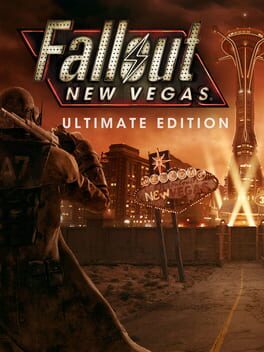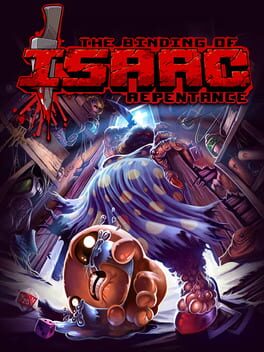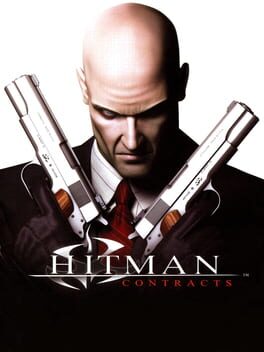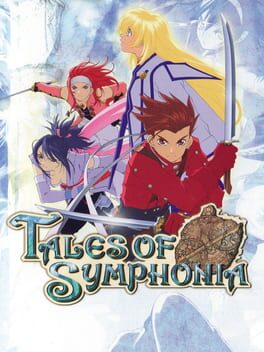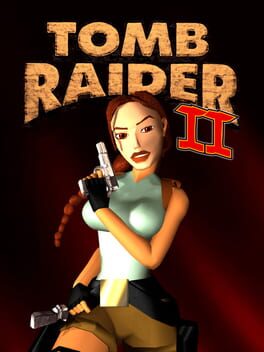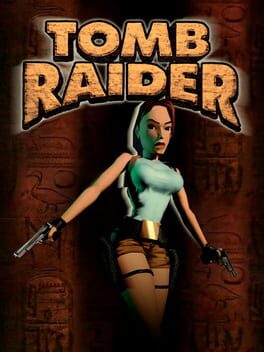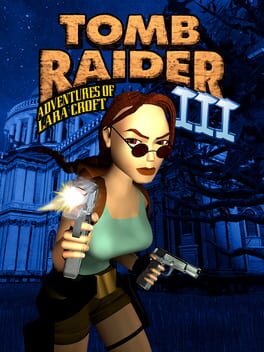NovaNiles
I got too many damn games to play, thank god.
Badges

Famous
Gained 100+ followers

Roadtrip
Voted for at least 3 features on the roadmap

Treasured
Gained 750+ total review likes

Trend Setter
Gained 50+ followers

Listed
Created 10+ public lists

Adored
Gained 300+ total review likes

1 Years of Service
Being part of the Backloggd community for 1 year

GOTY '23
Participated in the 2023 Game of the Year Event

Popular
Gained 15+ followers

Pinged
Mentioned by another user

Loved
Gained 100+ total review likes

Organized
Created a list folder with 5+ lists

Well Written
Gained 10+ likes on a single review

Best Friends
Become mutual friends with at least 3 others

Noticed
Gained 3+ followers

Donor
Liked 50+ reviews / lists

Gone Gold
Received 5+ likes on a review while featured on the front page

Liked
Gained 10+ total review likes

Gamer
Played 250+ games

N00b
Played 100+ games
Favorite Games
133
Total Games Played
019
Played in 2024
000
Games Backloggd
Recently Played See More
Recently Reviewed See More
There is no real game to speak of here, just walls of unwieldy text to click through and mountains of hyperlinks that pull your attention away from reading what seems like it could be an engaging story. Just to be stoped dead in your tracks while reading in order to look up words and events you really have no context for and there for might not even care about right away. I know that is the idea and the game's own web page describes itself as "a unique narrative adventure game about exploring a wiki-like interface", but I fell like if you want to fully engage the reader into your world, it helps to have a clearer structure to the events being told. You can still have all the gimmicks of personal logs, redacted sections in government documents and military propaganda. Maybe have some real time email traffic or chats you can respond to popping up on the side as you browse the wiki. Having you engage with the world in a tangible way, and perhaps even being able to make a choice for what side your sympathies align more. All in all, the most important aspect would be reducing the amounts of hyperlinks. Even just including a separate glossary on the side to pull up would help. In my opinion, it's better to make the broad strokes of your Universe as basic and understandable as possible and then you can bombard your audience with the more complex stuff later. The Universe is still interesting, mind you, there is potential here, but it's the dialogue between characters where the game ultimately shits the bed.
Throughout many of the personal logs and transcripts present here, these two warring factions feel less like opposing cultures and more like drunk discord mods. It's the clearest evidence of to the fact that if you want to make a distinct fictional universe, you need to put in some effort in to establishing a culture and a way of language. Especially if the main point of your story is to contrast the two factions against each other. I don't think Captain Picard encountering the Borg for the first time and trying to contact the Federation about the immediate danger would have had nearly the same impact as it did, if they're back and forth dialogue mainly consisted of “Naaaaah”, “lol”, “lmao” or “can we talk about the fact that they suck shit”. Not quite as impactful I would say.
If I had to pull up one last positive at the end, it probably be the presentation. It's all presented quit nicely through the UI of an old school computer terminal, with atmospheric background tracks. Although I would have liked to have more tracks overall, having some pages be completely silent while the next one suddenly ear blast you with a loud background track was an odd experience. Overall this was a neat project, that needed about 5 more rewrites and revisions. It's free to play in your browser anyway, so there is no harm in checking it out and having a laugh at it atleast. Maybe the next one will be better, always possible.
Sadly, as you can already guess from the rating, this turned out to be a massive disappointment. As the hours passed and the downward spiral of bad level design began, I became more and more miserable having to put up with everything Tomb Raider 3 was throwing at me. I was worn down and finally broken when I reached the end. I don't want this to be a rant about how much I hate this game. I still do, but there are so many fantastic qualities here that I can not even stoop so low as to call this a lazy sequel. Core Design really cared. It's just that all the visible care and love gets utterly crushed under the weight of unfair difficulty and a lack of polish, most likely due to razor tight deadlines along with an overworked staff. So let me go through the positives first before I start falling down the rabbit hole that has become my absolute hatred for this game.
Tomb Raider 3 has the best locations in the series so far. There is an incredible leap in art design at display here. Be it the opening trek through the jungles of India, the massive canyons in Nevada or looking out over the rooftops of Nighttime London. Levels feel lived in, in a way Tomb Raider 2 was still struggling with. The updated engine makes everything look so much less blocky, which the designers take full advantage off. I love the lighting, the colors and the great texture work. The atmosphere is so good, and I wish more games would take what Core Design accomplished here as an example. Really, in terms of atmosphere, TR3 doesn't miss even once. I love just standing in these maps and soaking it all in, ready to be pulled along into more adventures. It helps of course that the soundtrack is amazing aswell. There is a tone of ambiance to each location, of course classic series leitmotifs return and new tracks have been added that round everything out. It doesn't matter if it's discovering ancient ruins or if you find yourself face to face with horrifying creatures. It always fits, and I'm in love with the overall sound of TR3.
When it comes to the story, we find our favorite adventurer once again on the trail of a mysterious artifact. While on a treasure hunt deep in the jungles of India, she encounters a scientist named Dr Willard. He is looking for the missing pieces of a meteor that crashed down on earth millions of years ago, is responsible for having whipped out the Dinosaurs and starting the chain reaction of modern evolution. Supposedly these pieces also contain mysterious powers, once even being worshiped by Polynesian trips for their god like properties. And that's all we need to trot across the Globe. It's a dumb story even for the schlocky standards of classic Tomb Raider, but I still very much enjoyed it. The increased focus on cutscenes and Lara having more fun interactions with different characters helps the story flow much better than it did previously. This finally feels like a continues narrative and not just a semi connected sequence of video game stages. There is of course the obvious issue in how Lara has now been fully reduced to nothing more then what can only be described as a full on sociopath. More than ever before, she is an absolute bitch that cares about no one but herself and is willing to kill anybody that just so much as glances at her wrong. I'm still somewhat fine with her because the point was always to have an uncompromising action heroine, but previous games at least gave her some shred of humanity. The absolute girl boss attitude I fell in love is still present, but there is certainly a discussion to be had about crossing the line from girl boss to unlikeable cunt. This crosses that line way to often. TR2 is also guilty of this to a lesser extent, but toed the line in keeping her likeable much better in my opinion.
When it comes to combat, I'm happy to say that Core massively overhauled their approach to how you fight enemies. The fundamental controls are the same, but enemie encounters are spread out way smarter. Gone are the days of spawning goons right on top of the player. There are often spots you can jump to that give Lara a clear advantage, and even late game foes can be taken down with just a bit of effort and only the standard handguns. And that's basically all I wanted to see, and I'm glad they at least took the time to improve an aspect of the series that desperately needed a revision. Croft Manor now has been expanded with a shooting range as well. This version of Croft Manor is for sure the best one. Many secrets to find and all the tutorials you could ever need. Lara's home is practically its own giant level now. Once again I fully recommend you play around in the tutorial not only because it's a lot of fun but because it will also helps in familiarizing you with the expanded move set. Lara can now crawl, grab on to certain ceilings in order to use them as monkey bars, and is able to use a short dash that can be ended on a quick roll forward. These added options are mostly used to great effect, but I will admit that the dash stays fairly underutilized. There are only very few spots where it's actually needed, and even then I find those challenges more annoying than anything else.
And that's about all the positives I can think of. For all the love I can express for TR3, it just wouldn't be honest if I omitted all my frustrations and all the reasons why I ultimately came away with the conclusion that this is simply a very bad video game.
Starting off with the basic structure: You're now allowed to pick between locations in between the opening chapter and the finale. What sounds cool on paper, turns out to be a nightmare in reality. The three places you can pick from: Nevada, the South Pacific Islands and London vary so wildly in complexity and challenge that you're most likely going to fuck yourself over if you happen to choose wrong. Pro-tip: Always start with Nevada. I didn't, and it screwed me over hard by the final stretch. Nevada contains the easiest and most enjoyable set of levels, and most importantly: There is a similar bit to TR1 and 2 where all your items will be taken away from you, as Lara is once again captured by armed guards. Unlike previous games there is a high chance you will not get most of your inventory back, meaning that if you happen to pick Nevada last, you might lose hours of collected guns, ammo and med packs. At that point, you are just stuck desperately searching for scraps during the final 4 segments of Antarctica. It's a horrible design decision that I despise with a passion, and they should have either ditched the level select entirely or put actual effort in balancing each locations difficulty. And while the South Pacific Islands are a mostly tolerable set of levels, London is where the game fully backflips into of pit of rusty spicks.
London is a confusing labyrinth of dark hallways that loop around in the most unintuitive ways. I got lost so many times just backtracking, not knowing what my goal even was, and finding crucial progression items in spots that made me scream in agony. Of course, one of the keys needed to progress in on top of a mining drill you just escaped from in order to not get crushed to death. It's not like every sane human being would see the section now occupied by the giant death drill as blocked off for good. Add to that weird angled jumps that shouldn't work, but sometimes just do, and hard to make out wall texture that are supposse to signal climbable surfaces. Trust me, you will run past those surfaces for a couple of hours before looking up a guide and then promptly feeling the primal urge to buy a gun along with a time machine in order to pay Core Designs studio a friendly visit back in the late 90s. All that misery and I haven't even mentioned the vehicle sections yet. Oh, the fucking vehicles. TR2 had the exact same issue, but the meaningful difference is again that this was limited to only 2 sections. We had a boat, that controlled fine, and a snowmobile that controlled like shit. TR3 on the other hand has at least one vehicle for each location. There is an ATV, a kayak, a weird underwater robot, a Donkey Kong style minecart ride and another boat. I don't know which one is the worst for me, but it has to be a tie between the kayak and the minecart. Paddling the kayak through the rapids of the south pacific rain forest is pure luck, as you can't really control it and are at the mercy of the game's geometry in order for Lara to not straight up smash into a pile of rocks and drown. The minecart on the other hand will make you randomly fly off the tracks if you happen to pull the break at the wrong time, that is if you even know where to fucking go in the nightmare labyrinth known as the RX Tech Mines. Either way, the conclusion is always: try to get somewhere, die, reload, repeat that step about 50 times per stage until you get that one lucky try that lets you progress.
I hate Tomb Raider 3. I can't recommend it to anyone ever. The final boss was a giant spider mutant that makes you run around in a circle for 40 minutes so you can pick up some shinny rocks. Watch the game end with Lara shooting a totally innocent Helicopter pilot in the face and a shot of her ass while the credits play. Fuck this game, I need to game something good next.
As the first big budget title of Korean developer Neowiz, Lies of P takes from the literary work of Italian author Carlo Collodi's famous Pinocchio story. Although this is less of a 1:1 adaptation, and more a jumping off point to take the moral lessons of that story in order to explore deeper themes like ethics and transhumanism. And the further I descended into the city of Krat, the deeper the rabbit hole got, as I noticed the literary references and themes pile up to construct a cohesive world with immaculate world building. From I what I could find, this seems to be writer and director Choi Ji-Wons first big budget gig and I can only applaud his skill at weaving an absolutely inspired setting out of what is a patch work job of his big inspirations. There are clear references to the works of Oscar Wilde and the sci-fi stories of Isaac Asimov and Philip K. Dick. Even classic anime like Full Metal Alchemist and Ghost in the Shell find their way into the city of Krat. Of course, there are also countless parallels to FromSoftwares own catalog with themes of mortality, how some are willing to seemingly doom the entire world for their ability to cheat fate and if there can even be some kind of some kind of moral or ethical justification for those very decisions. It's masterfully crafted, and I'm far from done sifting through its dense lore, a feeling I honestly haven't experienced since first diving into the original Dark Souls trilogy.
Just as important as the lore in a game, is its soundtrack wich turned out to be a mixed bag. And I can clearly separate the music in two very distinct categories. There is of course the non-diegetic soundtrack, which consists of your typical biblical choirs that play during big boss fights. Their epic, their bombastic and honestly something I'm really tired of. I couldn't pick them out of line up even if you held a gun to my head. I miss the days when boss themes in this genre had interesting compositions, like the theme of Lord Gwyn or Seath the scaleless from Dark Souls 1. What is exceptional however is the diegetic music played throughout the game. There are vinyl records to collect that can be listened to in the hub while you do your typical busywork like level up or weapon upgrades. They can also be heard throughout various places in Krat. Fitting with the city's theme of being heavily inspired by french culture, they consist of classical melodies with french lyrics, actually sung by Korean Artists. Which gives them an additional lair of other worldliness while you traverse the ruined streets of Krat. It's a style that I would love to see composer Yeakun Yoo develop further if he hopefully sticks with composing another Video Game.
On the gameplay front, Lies of P is also the closest one can get to ever matching FromSoftware's Souls formula. It's a true grab bag of all the modern FromSoftware mechanics. From the basic 1 vs 1 combat against bigger foes, to the aggressive tug of war that was introduced in Bloodborn that encourages you to get health back by fighting aggressively. Mechanical Lies of P is more than excellent. It's finally a soul-like that puts heavy weight behind your build decisions. To the point where the game makes it incredibly easy to respec your character. You're incentivised to experiment with all the options given, while also immediately teaching you the benefits of learning how to get enemies to stagger and parry their attacks. From increasing the chance of giving enemies fatal hits, to being able to negate damage entirely and even breaking their weapons. Of course, your weapons can break as well, with you having to repair them mid-battle leading to tens moments. This creates a wonderul tug of war where you're on equal footing with most enemies. I enjoyed those moments immensely where you decide to stick with parrying a flurry of attacks, get them to stagger for a fatal blow and using his recovering time to repair your weapon before jumping back into the battle. The dodge roll does exist, and can even be upgraded further, but unlike its inspirations it tends to be entirely situational. There is a prosthetic arm as well, ripped straight from Sekiro, that opens additional combat options. Among other things, you get a hook shoot to pull enemies towards you, a flamethrower and an arm canon. This result in a variety list of combat options while still being able to design everything around a few core mechanics. And those mechanics are used in some of the best boss fights in my opinion, with them even outdoing a FromSoftware staple. Twice. A 4 vs 1 fight that doesn't suck and gives you the option to even the odds in multiple ways. If I had to pick, those fights might be my overall favorites in the game, both in how they are build up from the very beginning of the game and then when the game finally pulls the trigger. It's the pinnacle of what I think Lies of P can achieve when it moves beyond its slavish devotion to Miyazaki's work. With spectacular results.
The other side of that devotion is all the parts where the game's falters, often in the exact same ways as Fromsoft. I found most of its last third to be a bland slog. Locations that conceptually should be fantastic, but fall flat in execution. In a game based around the concept of living puppets and philosophical questions about what makes one human or what a conscience even is, a graveyard of discarded puppets should be amazing. But it turned out to be one of several uninspired locations that had me just run through them blindly, not regretting that decision for a second. And one of several poison swamps Lies of P throws you into aswell, bringing the game's stellar quality down for me. Myazaki really put the brainworm in developers heads with his poison swamp obsession for all eternity. Please, stop it, get some help.
And as overall polished as combat is, even Neowiz could not iron out all of the typical souls like issues. I'm willing to cut them some slag as it's their first big title, but in the last third these issues just piled up in a way I could not ignore anymore. The camera getting stuck in smaller areas, enemies that spam you with status effects and predictable ambushes that stopped being surprising 10 years ago. If it was just a single area, that be fine, but it's a consistend drop off in quality right until the very end of the game. It really is a case where the setting and gameplay systems carried me through to the “final boss”. I'm saying final boss in quotes because I didn't actually get to fight the true final boss. For some reason, Neowiz decided to grab one of the worst decisions Fromsoftware themselves made in Blooborn and copy it. Hiding the real final boss behind an arbitrary decision with no warning, that you can't go back on. Setting aside the fact that NG+ seems to add some more lore elements and gear, from what little I played at least, I think locking a main path story boss behind another full play through has never set right with me. I just think its bad design. And I really was going to lower the score based on that alone.... Then the post credit scene happened. Needless to say, I'm beyond excited for Neowizes next game. It's a stinger hinted throughout all the game, and then they just confirm it with “yep, we are doing THAT” during the post credit scene. I'm here, my wallet is ready.
